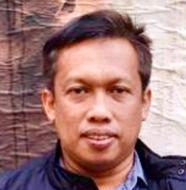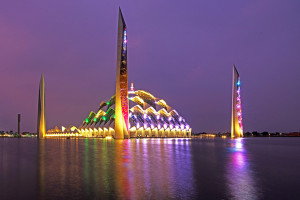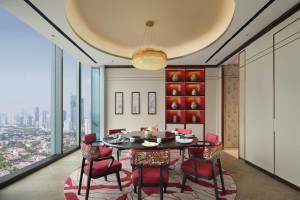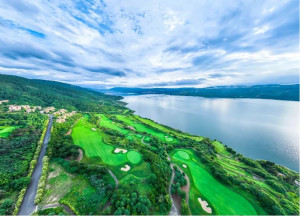At a temperature of minus 9°C and with oxygen thinning out, this is a challenging task for anyone.
After successfully climbing the EBC in March 2023, this afternoon, 25 February 2024, we were on the Batik Air flight from Jakarta to Kathmandu via Kuala Lumpur to climb in the Himalayas, on the Annapurna Circuit. This time the group is bigger than before, 28 people.
It all started in late 2022 when Achmad Hasan (Lion Air's Commercial Director) and businessman Chandra Bong had the idea of climbing to Everest Base Camp (EBC). This idea was then offered to several other friends and the trip was made in March 2023. A total of 20 people flew to Kathmandu in 2023 and completed the EBC mission at an altitude of 5,346 metees above sea level.
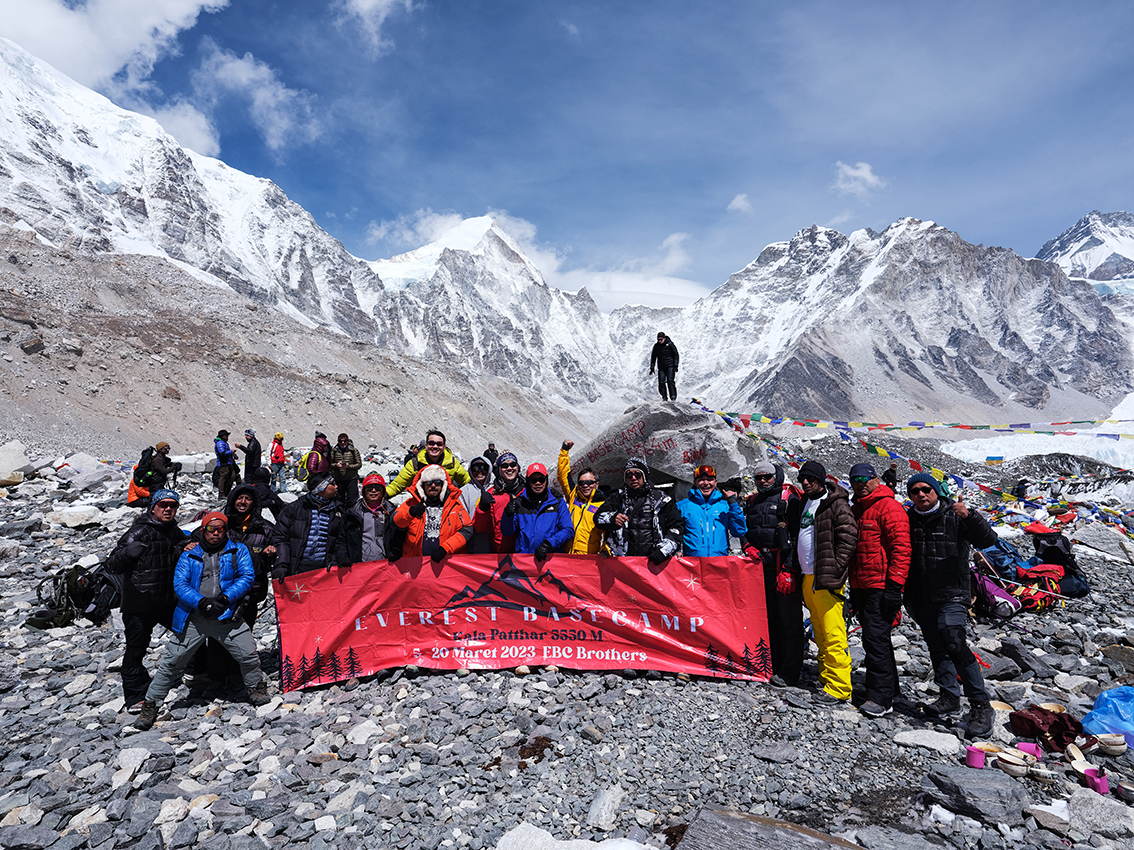
After a six-hour trek from Gorak, we made it to Everest Base Camp (EBC) at noon on March 2023.
On the return from the EBC - at the Marriott Bonvoy Hotel in Kathmandu - it was agreed that the team would attempt the Annapurna Circuit in 2024, with the Thorong-La Pass as the target.
It turns out that the number of participants has increased. Even the oldest participant is getting older: Andi Chandrawinata (73 years old). There is also Hasanuddin University professor Prof Aidir Amin Daud (65 years old), owner of Manorian Group Makassar, Hendrik Wintery (62 years old), CEO of Super Air Jet, Ari Azhari (62 years old), former regent of Atambua, Willybrodus (63 years old). The youngest participant is the CEO of Dream Tour, Muhammad Umar Abdul Azis (26 years old).
The old participants are still complete: Achmad Hasan, Chandra Bong, Handoko Prawirohardjo, Reza Amir Balfas, Stanley Annjaya, Suryadi Suryadhamma, Makhfud Sappe, Ronih Tjhang, Sendy Pranata, Irwan Sek, Erpan Setiawan, Gregory Wintery, Rheza Novianto, Theodorus Chapin, Fauzan Elyafei (Group Leader), Jarno Jahya, Alfonsus G Wijaya, Erwan Suhardi, James Tumbelaka, Stefanus Jono, Rudy S Jaya and Christian Kurniawan.
We arrived at Kathmandu's Tribhuvan Airport at 10 pm and were met by Niraj Shakya, the trek leader who will be leading us on the Annapurna Circuit. The group went straight to the Marriott Bonvoy Hotel.
From 1 April, the Nepal Tourism Board (NTB) requires all individual and group climbers visiting Nepal's mountains and national parks to be accompanied by a licensed guide.
On the first day, at around nine in the morning, everyone was ready in the lobby, this morning we were off to Besisahar, a journey of about eight hours over rough and dusty roads. Six Pajero jeeps that will take us to Besisahar.
I was in the fifth jeep with Prof Aidir, Sandy, Willy, and Andy. The convoy left Kathmandu in the direction of Pokhara. We arrived in Besisahar at dusk, where the group spent the night.
Day two, Besisahar - Chame route. Climbers on the Annapurna Circuit usually start from Besisahar. The trek is through hillsides prone to landslides and the jeep had to move slowly due to the narrow and rocky road. On the left, a rocky cliff, and on the right, a gorge.
The wheels were about 20-30 cm from the edge of the cliff. With an average age of over 25 years, the drivers of the jeep pajeros showed no fear. They continued to drive fast, following winding uphill roads. We stopped briefly at a teahouse in the village of Chamche, overlooking the waterfall.
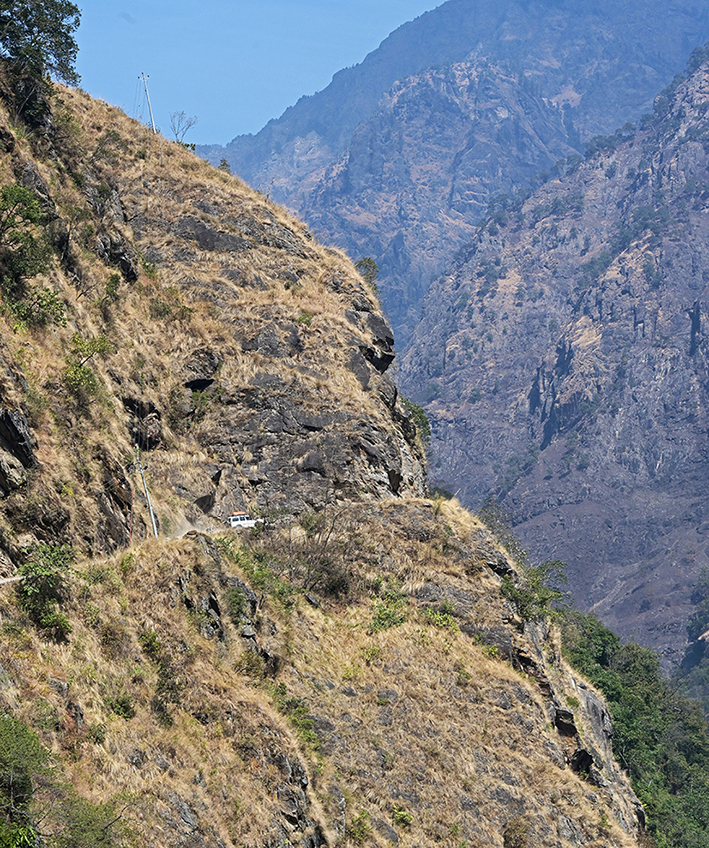
The jeep climbs up the narrow rocky and dusty road to Chame
The Nepalese government has started to tighten the rules for visitors to the Himalayas. We were stopped twice on the way to Chame.
We finally arrived in Chame in the evening. It was our first night in a teahouse on the trekking route. The weather was starting to get cold, with temperatures dropping below 0°C at night. Chame is situated at an altitude of 2,670 meters in the Manang district.
The next day, or the third day, we started walking from Chame towards Upper Pisang. After breakfast, the group prepared by praying together. We walked along village roads, occasionally passing cars carrying goods and local people. On the way, we stopped at a small cafe in an apple orchard.

Left to Right : Stefanus Jono, Chandra Bong, Rudy S. Jaya, Irwan Sek, and Erpan Setiawan
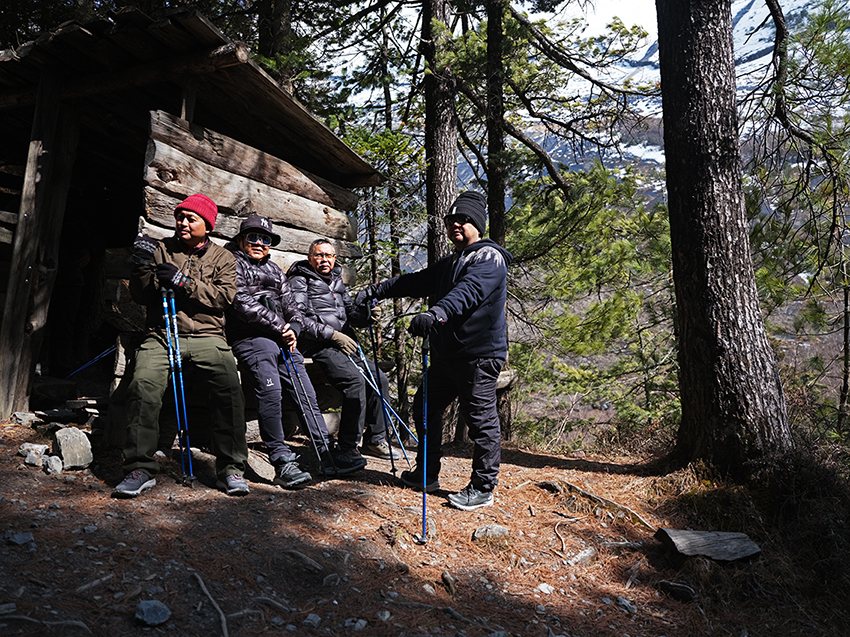
Left to Right: Erpan Setiawan, Chandra Bong, Aidir Amin Daud, and Sek Irwan, take a short break on the trek to Upper Pisang.
After walking for about six hours, we reached Upper Pisang. The group went straight into the dining room to rest while waiting for room allocations, and from the window, we could see the summit of Annapurna II.
Acclimatisation in Manang
This morning we set off from the teahouse where we were staying to Manang (3,440m), walking downhill past a small bridge and Tibetan prayer wheels before passing through Lower Pisang village.
The scenery became even more breathtaking. At the start of the climb, Annapurna II peak was visible to the left. This trek was quite long and tiring. As we approached Manang, the scenery became even more beautiful, with Ghangapurna and Tilicho Peak in the distance.

Left to right : James Tumbelaka, Erwan Suhardi, Jarno Jahja, Stefanus Jono, Rudy S Jaya, Hendrik Wintery, Gregory Wintery, Chandra Bong, Achmad Hasan, dan Muhamad Umar Abdul Azis.
By the evening everyone had arrived in Manang (3,440m) and the group stayed at the Yeti Hotel. Here we would acclimatize - meaning there would be no trekking tomorrow.
Prof Aidir and I got a room on the first floor - we had to go up and down the stairs if we wanted to go to the dining room on the third floor. With our oxygen levels dropping slightly, we were out of breath every time we went up and down the stairs.
Of all the villages we passed, Manang had the best hotel facilities and several shops selling trekking equipment. Manang is where climbers acclimatize.
The next day was more rest in the dining room and some went shopping for climbing gear in the shops around the hotel.
Day six Manang (3440m) - Yak Kharka (4020m). From the hotel we turned left, passing through residential areas. The road became steeper, with beautiful views on both sides, the cluster of snow-capped Annapurna peaks.
We passed through Tangki Village before walking in an open area, the weather getting colder. The vegetation began to change, with no more large trees, replaced by shrubs and bushes, mostly covered in snow. As we walked, cold winds blew hard, and light snow began to fall.
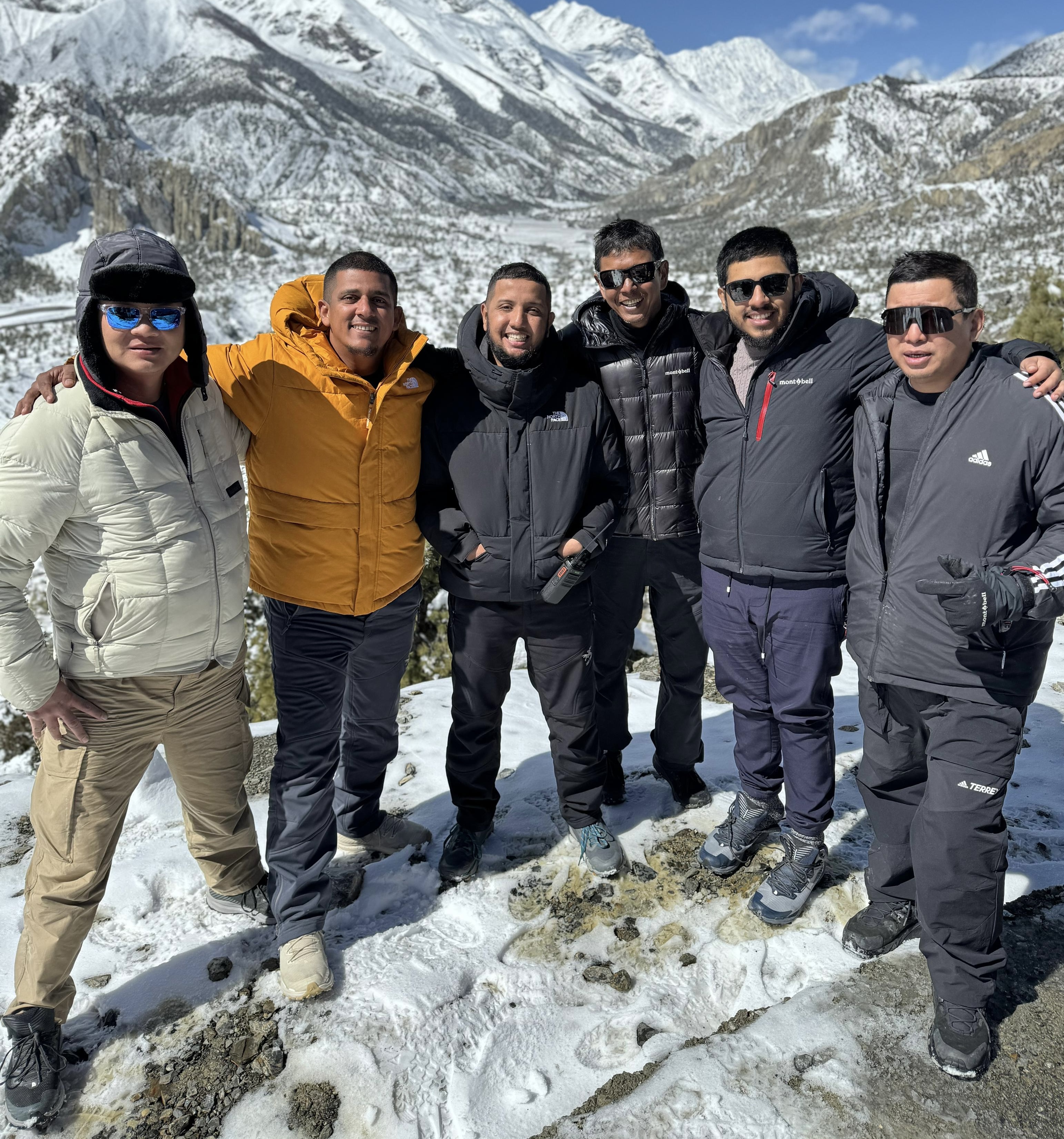
Left to Right : Christian Kurniawan, Reza Amir Balfas, Fauzan Elyafei, Achmad Hasan, Muhammad, and Rudy S Jaya.
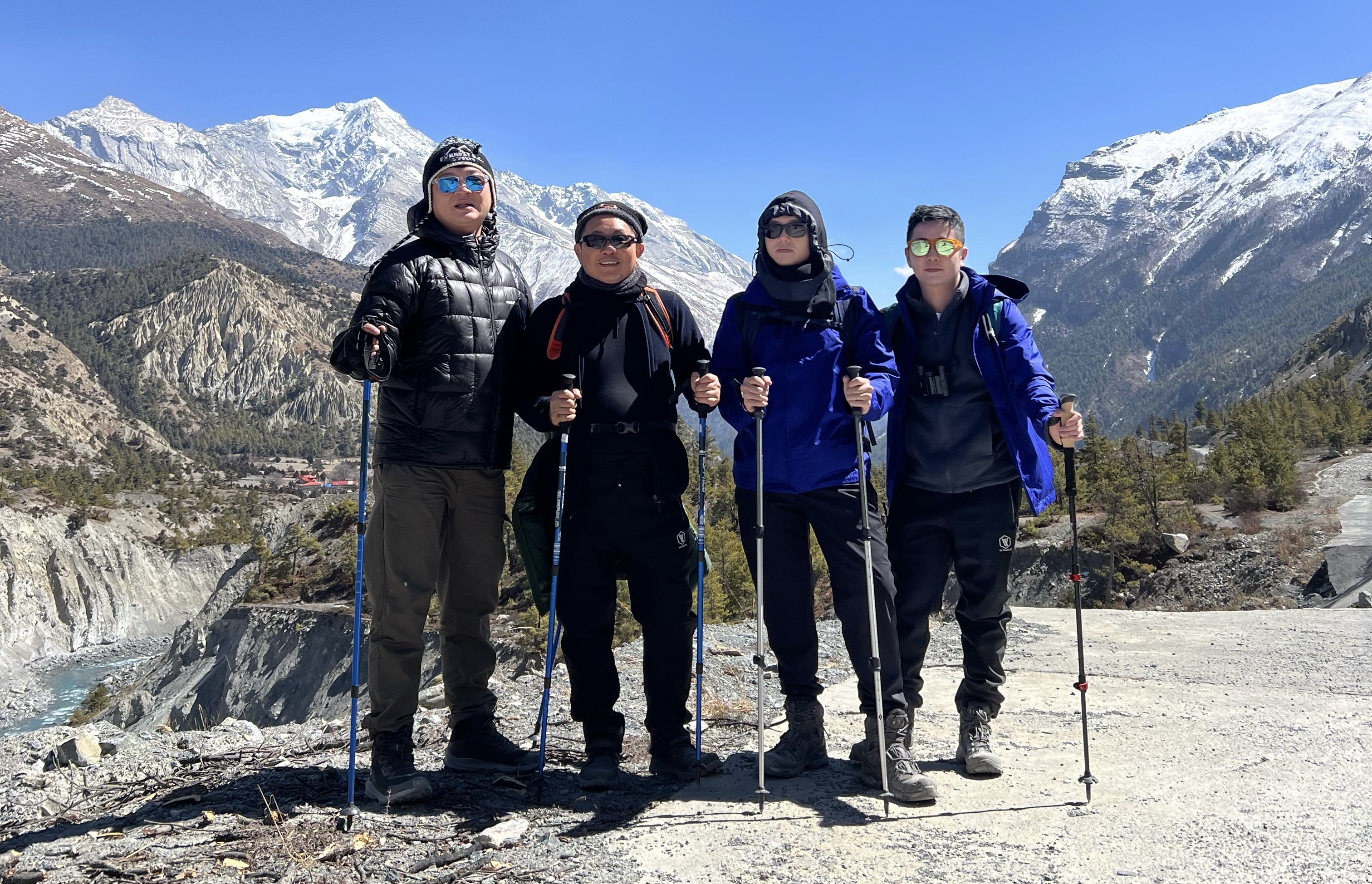
We reached Yak Kharka in the evening. The weather was getting colder and the snow outside was getting thicker. The roofs of the buildings were already covered with snow. We gathered in the dining room, which had a heater for warmth.
Our group consisted of nearly thirty people, plus porters and over ten trekking assistants, filling the dining rooms on the first and second floors. The temperature at night was minus 19°C and the snow outside was getting thicker.
Day seven. Early in the morning, we were ready to set off, the duffel bags had been given to the porters. The snow on the roads was getting thicker. Today we had to use crampons on our shoes and gaiters on our legs to keep the snow out of our shoes.
We started walking at around eight in the morning, our next destination being Thorong Phedi (4,450 meters). The road was covered in snow and our shoes were sinking in, making it difficult to move forward.
After walking for about 15 minutes, we decided to postpone today's trip to Thorong Phedi and return to the hotel. The bags were put back in the rooms, luckily we could still get rooms.
It was a challenge to walk with our feet sinking into the ice. Lifting your feet to move forward was not an easy task. The cold air at minus 9°C and the low oxygen levels were a challenge for everyone. In addition, the mounds of snow were higher than the shoes, allowing snow to creep into the shoes, cooling the feet, and potentially freezing the outer parts of the soles and toes. It would be a challenge to walk eight kilometers in such conditions. That's why Niraj, the trek leader, instructed us all to return to the hotel.
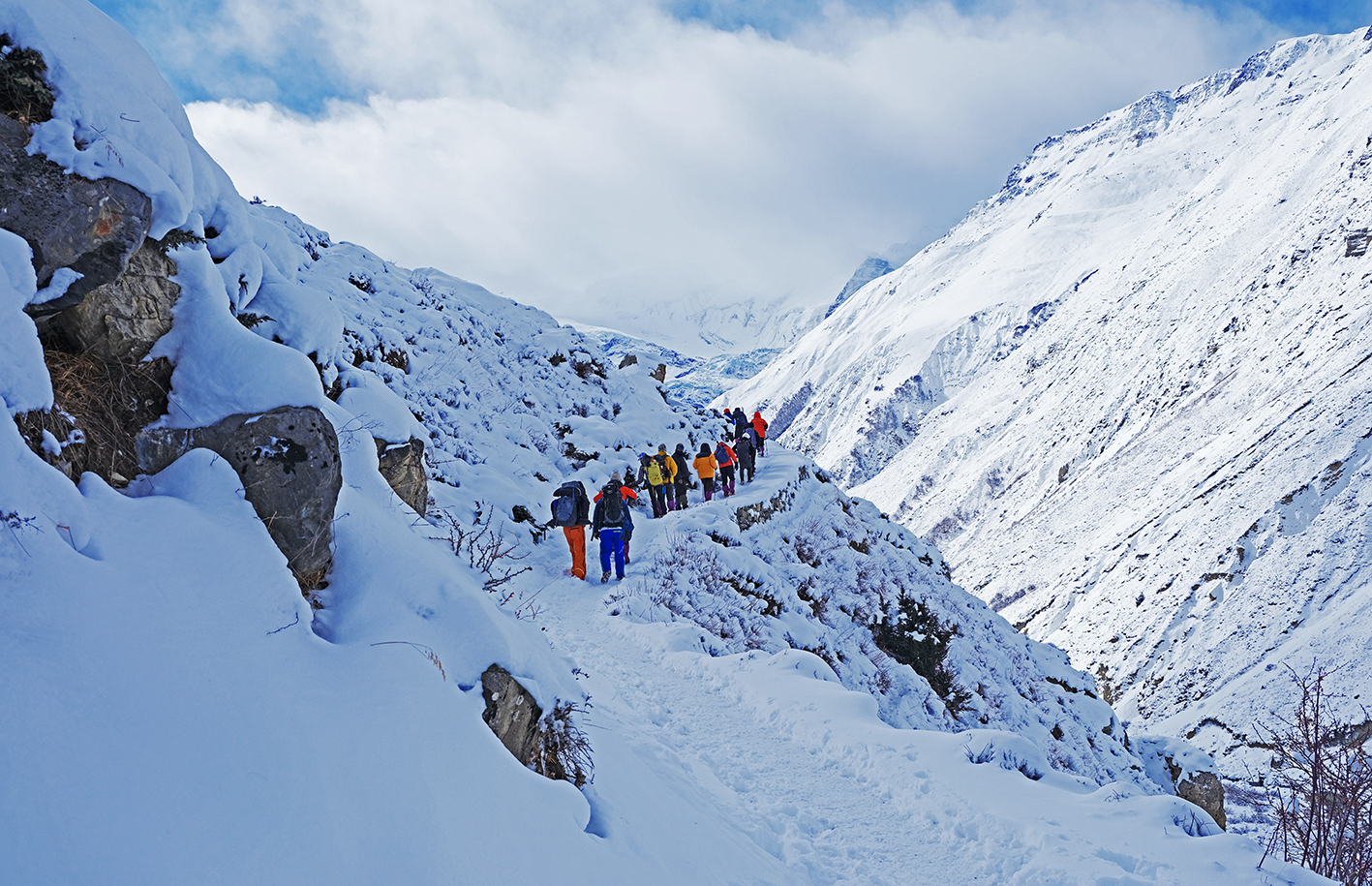
Walking through the thick snow back to Manag.
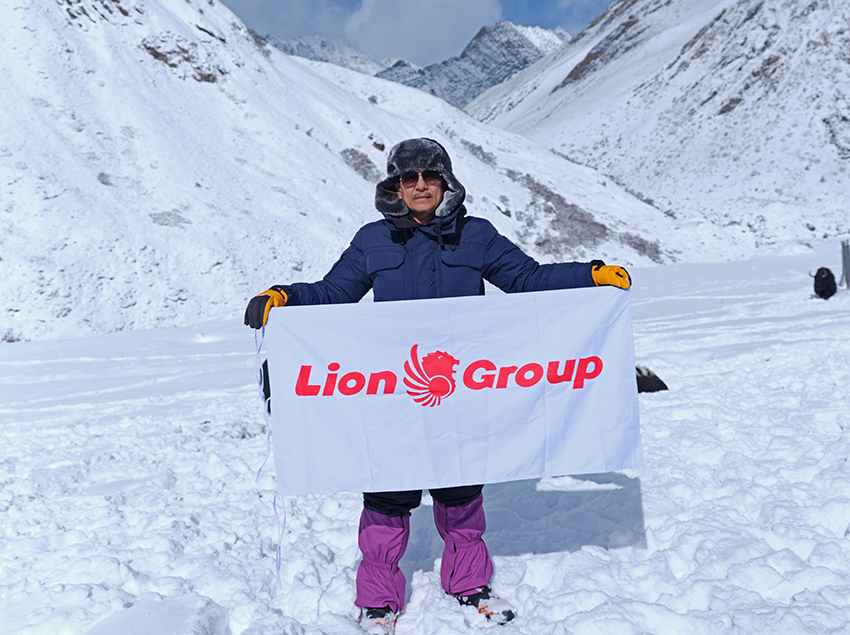
We spent the day in the dining room, which fortunately had wifi. Before dinner, Fauzan, the group leader, and Niraj discussed all the possibilities. We waited for the snowfall to subside, and debated whether to continue on snowy roads or return to Manang. This evening marked the seventh day on the trek.****

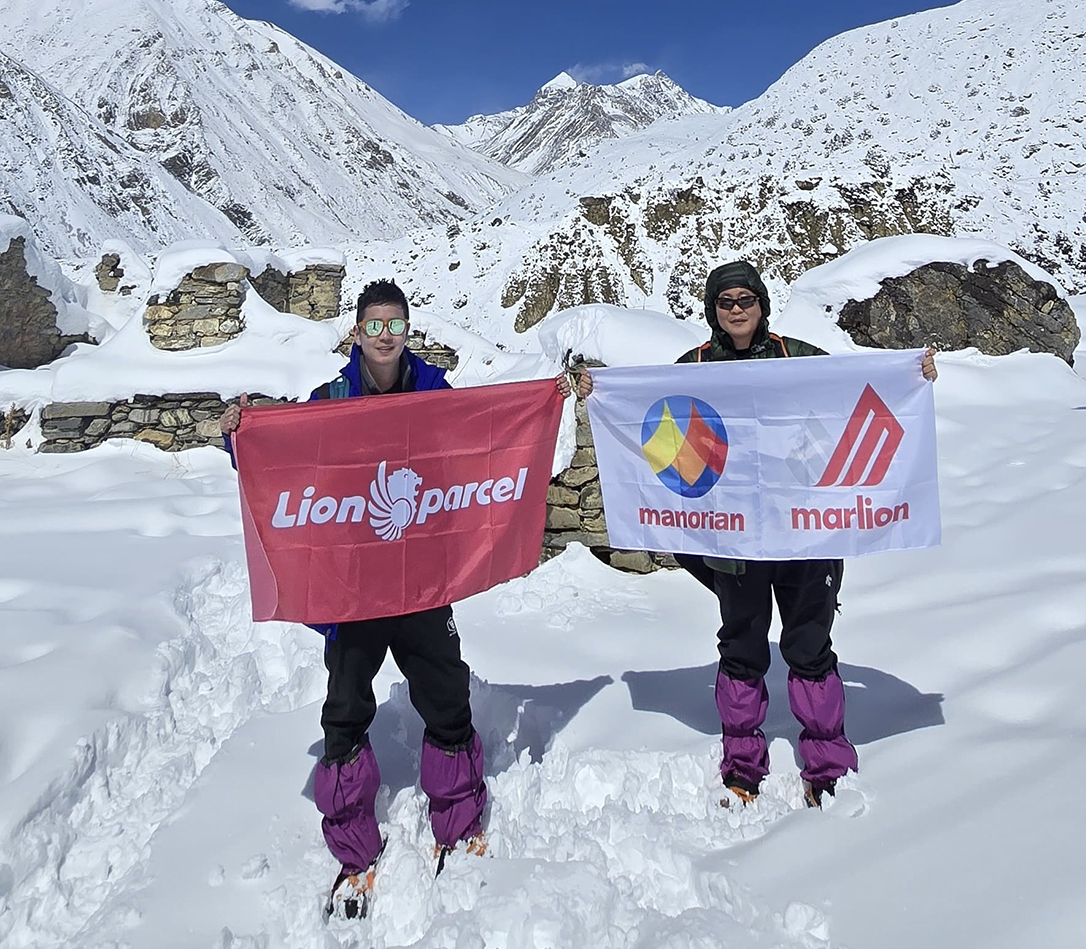
NEXT : Returning to repay the "debt' in Annapurna
*Translated from Indonesian article.

